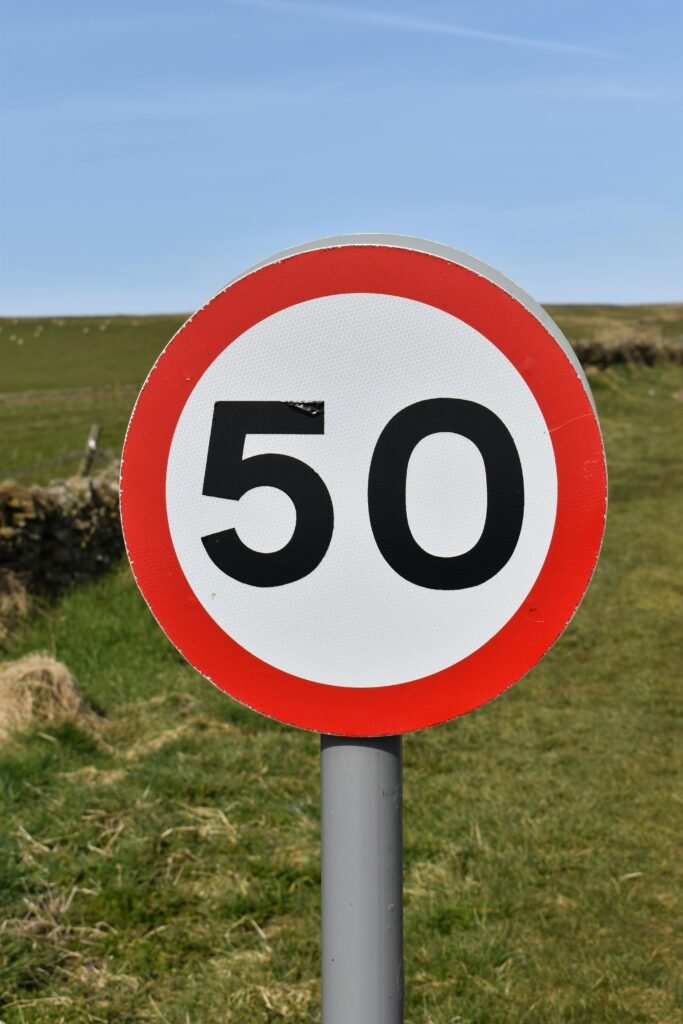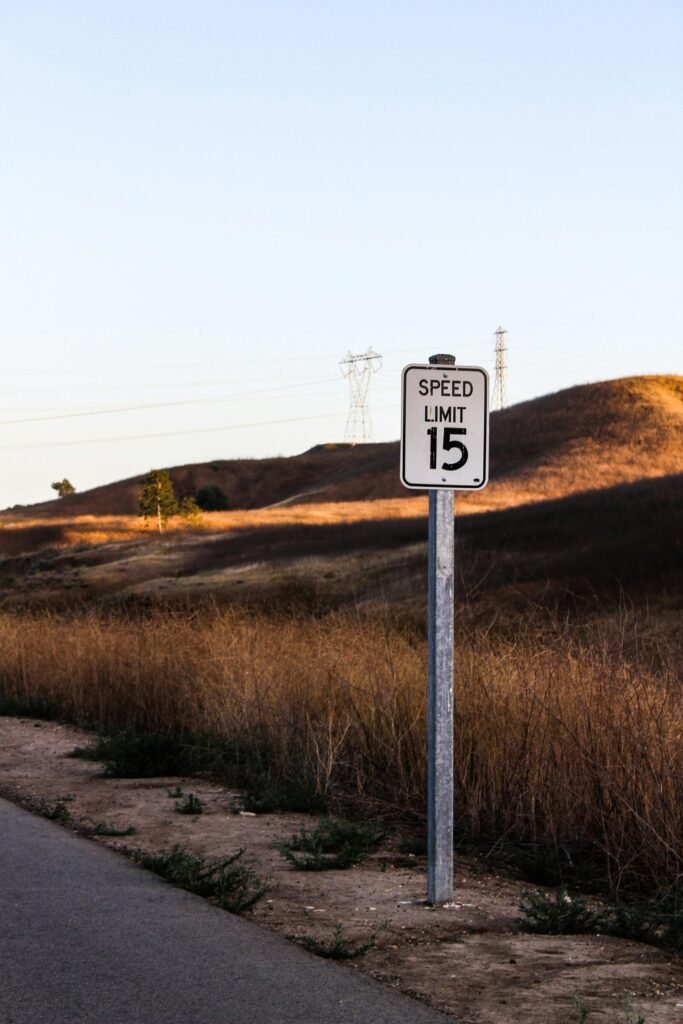Driving Tests and Advisory Speed Limits | Tips to Pass and Stay Safe
“Hey, maybe slow down a bit” is the informal message displayed by speed limit signs that aren’t in a red circle.
Yes, those are speed limits that are merely recommendations and not legally binding. The worst part is that they can still tamper with your driving test.
Too closely follow them?
Traffic jams could cause you to fail.
Ignore them entirely?
You’ll have a hard time telling the examiner that. You have to strike a balance, much as when you’re trying to figure out how much small talk is appropriate with your neighbor.
Let’s examine how to read these subtle clues without losing your composure or your license.
Advisory Speed Limits
The advisory speed limit is not a legal requirement, and therefore, if you don’t abide by that advice, that in itself is not a reason for a driving test to fail.
However, if the examiner felt that you were going too fast for the current road conditions, then yes, you could still fail the driving test.
But what you probably weren’t aware of is that you can fail the driving test for abiding by the advisory speed limit.
Yes, this can happen, but more on that one later.
Compulsory Signs
How can you tell the difference between an advisory speed limit and a compulsory speed limit?

Well, advisory speed limits are in squares or rectangles. They can be digital with orange flashing lights. These are not a legal requirement.

Compulsory speed limits are circular signs with a red border.
These are a legal requirement, and if you exceed them, you are breaking the law.
There are even minimum speed limits.

These are blue circular signs with a number in them.
They’re usually used in places like tunnels to try and prevent congestion and keep traffic flowing, although those limits are often so low I don’t know who would be driving that slowly—unless you’re stuck in traffic, in which case, well, you have no choice.
The Right Move
So, what do you need to do to pass the driving test?
Should you abide by the advisory speed limit, or should you ignore it? Well, actually, it’s neither—you should consider it.
This is what I mean. To pass the driving test, you need to be able to drive safely and legally while making appropriate progress.
You need to be able to judge, How fast can I go on this bit of road while making good progress without causing problems for others, but not so fast that I’m either illegal or unsafe?

Advisory speed limits are there to grab your attention and say, Hey, this bit of road is hazardous.
You may want to consider driving at this speed to be safe.
The trouble is, road conditions change.
That sign may not be appropriate for the current road conditions, or it may even be out of date. So, it’s up to you to judge what an appropriate speed is for a piece of road.
Can Following Limits Fail You?
Let’s say you’re driving on a road that has recently been resurfaced.
After resurfacing, it was covered in loose road chippings. The problem with those is that they create a semi-loose surface, meaning you have less traction. Additionally, they can flick up and damage vehicles behind you.
It’s also unpleasant for cyclists you pass or pedestrians nearby.

To address this, a warning sign might be put up for loose road chippings, along with an advisory speed limit—say it says, Max Speed 20 mph.

However, the legal compulsory speed limit for the road is 50 mph.
Now, you’re driving on this road days after it was resurfaced.
Most of the loose chippings have been embedded into the ground or swept to one side, and traffic has returned to normal speeds.
You see that Max Speed 20 mph advisory sign and think, I’m on my driving test, and it says Max 20. I’ll stick to that as my max.
Here’s where you could fail. The examiner isn’t judging you based on the advisory speed limit sign.
They’re evaluating your ability to judge the road conditions.
If you’re driving a little slower than they feel is appropriate, they may mark it as a minor fault.
However, if you’re driving significantly slower—grossly slower—they may give you a serious fault, leading to a fail.
This is especially true if you cause a queue of cars behind you or encourage dangerous overtaking.
A way to judge whether the advisory speed limit is still applicable is to listen.
When you drive on the road, can you hear loose road chippings flicking up into the wheel arches?
Does the road look clean? If you can’t hear the chippings and the road looks clear, it’s likely safe to return to normal speed.
Another situation where you could fail for strictly following an advisory speed limit is in a school zone.

Imagine a sign that says, Max Speed 20 mph when lights flash.
But it’s a bank holiday or school holiday, and the pavements are empty. If you drive at 20 mph, causing a queue behind you and encouraging overtaking, this could result in a serious fault on your test.
Even without a serious fault, remember that accumulating two minor faults for similar issues—such as driving unnecessarily slowly—can also lead to a failure.
Appropriate Speed
Let’s talk about “appropriate speed.” This term essentially refers to driving too slowly.
When examiners mark “use of speed,” it’s for driving too fast. For “appropriate speed,” it’s for driving too slow.
Let’s say you’re driving slightly slower than ideal, and the examiner marks it as a minor fault for appropriate speed.
If it’s only a slight issue, they’ll likely let it slide a few times before considering it serious.
However, if you’re driving really slow, the examiner might initially hesitate to fail you. They’ll observe to see if it’s a consistent pattern.
If you continue to drive too slowly over multiple junctions or stretches of road, those repeated minor faults can escalate into a serious fault.
That’s how two minor faults can lead to a failure.
Carriageways and Motorways
On dual carriageways and motorways, strictly following advisory speed limits can sometimes create danger.
For example, you might see an advisory speed limit of 40 mph on a road with a legal limit of 70 mph.
If you slow to 40 mph, traffic behind you might catch up quickly, forcing drivers to brake or change lanes abruptly.
In such situations, it’s usually better to stick with the flow of traffic while maintaining a safe distance from the vehicle ahead.

Keep an eye out for brake lights and try to identify the reason for the advisory limit. If it’s a compulsory limit (indicated by a red-bordered sign), you must follow it—it’s the law.
In Corners

Advisory speed limits for corners are generally good advice, especially on high-speed roads.
These signs are often used for sharper bends than they appear.
Slowing to the advisory speed gives you time to assess how sharp the bend is, evaluate road conditions, and gauge visibility.
It’s also better to brake before steering into a corner.
Tires perform better when tasked with one job at a time. If you try to brake and steer simultaneously, your tires are working harder, increasing the risk of understeering or losing control.
Leniency
In my experience, driving examiners are usually more lenient if you’re driving slowly because of an advisory speed limit sign.
They understand you’re trying to be cautious.
However, there’s a limit to their patience.
If your speed is grossly inappropriate for the conditions, holds up traffic, or creates danger, it could still result in a failure.
Can You Be Punished for Ignoring Advisory Limits?
Even though advisory speed limits aren’t legally enforceable, ignoring them can have consequences.
If you’re involved in a collision and it’s proven that driving faster than the advisory speed contributed to the incident, this could be held against you.
It may influence how you’re judged or punished.
Advisory speed limits exist to give you a heads-up and recommend a safe speed to consider.
Ultimately, it’s up to you to judge what’s appropriate for the conditions while staying within legal limits.


